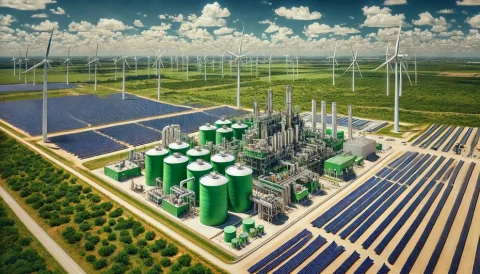India’s ambitious Green Hydrogen Mission has received a significant boost with the World Bank approving an additional $1.5 billion loan. This marks the second tranche of aid, bringing the total assistance to $3 billion. The funds aim to strengthen India’s domestic green hydrogen market and implement reforms to attract private investment, aligning with the targets set by the National Green Hydrogen Mission.
India’s Progress in Green Hydrogen Sector Commended
Auguste Tano Kouame, World Bank’s Country Director for India, praised India’s progress in the green hydrogen sector. He highlighted the issuance of tenders and expressions of interest worth $70 billion within a year, calling it “great progress.”

The Second Low Carbon Energy Programmatic Development Policy Cooperation will facilitate reforms to enhance green hydrogen production, focusing on critical technologies like electrolyzers. It also supports reforms to promote renewable energy, including incentives for battery energy storage solutions.
World Bank Sets Production Targets for India
- Under this program, the World Bank aims to help India achieve:
- Annual production of at least 450,000 metric tonnes of green hydrogen starting from FY 2025-26
- 1,500 MW of electrolyzers starting from FY 2025-26
Encouraging private sector involvement is a key objective, with Mr. Kouame emphasizing the low risk of producing green hydrogen in India due to the government’s significant measures and lack of apparent limitations.
Regulatory Frameworks and Banking Sector Involvement Crucial

Mr. Kouame urged swift regulatory frameworks to further attract private players and suggested that the banking sector could play a pivotal role in boosting the domestic market through partnerships.
India’s Green Hydrogen Mission: Ambitious and Job-Creating
The World Bank considers its operation in India’s green hydrogen sector as one of its most ambitious programs. If successful, it could position India as a leading global producer of green hydrogen, potentially generating substantial green jobs. The Green Hydrogen Mission aims to:
Create 600,000 jobs, a significant figure for a single industry
Foster inclusive jobs, particularly conducive to women, being less labor-intensive and more knowledge-oriented
The initiative not only aims to advance India’s green energy goals but also to foster economic growth through sustainable practices and job creation. With the World Bank’s support and the government’s commitment, India is well-positioned to become a global leader in the green hydrogen sector.













